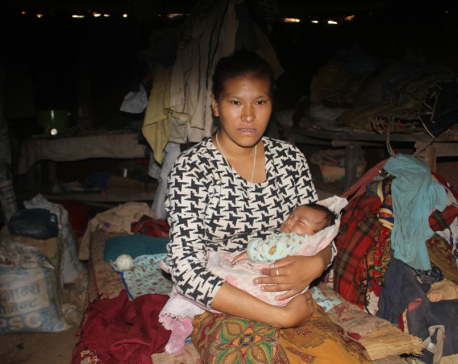
OR
Opinion


Rajesh Poudel
The author is a development professional based in Kathmandu and currently works for an international NGO.news@myrepublica.com
More from Author
Social innovation, an umbrella term, is not confined to any particular sector. It can mean anything from novel services, products, practices, processes, mechanisms, models, rules, regulations, and organizational forms; and happens across public, non-profit, and private sectors. In its many forms, social innovation can be community-led, systemic, structural, and societal.
Social innovation is a new way of solving social problems or meeting social needs and it puts people, environment, sustainability, and inclusive growth at its center. It is not about creating completely new solutions rather than applying them in contexts where it has not been tried before and by involving the beneficiaries or communities themselves, underpinned by the elements of collaboration, co-design, and co-creation. Social innovations should also be able to meet emerging or specific social needs or engender new social practices. It is distinct from innovation in that it has a clear beneficial impact on the population it serves.
Target groups, beneficiaries or service seekers should be encouraged and engaged in all stages and processes of social innovation directly or indirectly including identification, design, implementation, and governance. They need to identify their problems and own the solutions. In the entire process of social innovation, the aim is to enhance access to power and resources of the people, groups, or communities it intends to serve.
The European Union actively promotes social innovation to achieve policy goals. One example of public sector innovation is Mindlab embedded in the Danish Central Government which aims at bringing a human-centered design approach to public sector challenges. It involves citizens, businesses, and government personnel to redesign public services. The UK's Behavioral Insight Team and Singapore’s Design Thinking Unit in the Prime Minister's Public Service Division Office are other examples of proactive government-led social innovation.
Smart policies spurred innovation in Israel, the resource-poor tiny middle-eastern desert nation. It is now hailed as a startup nation. Multidimensional Poverty Index (MPI) is one of the latest and most innovative tools for measuring poverty. Mohamud Yunus's microcredit lending, a simple, yet effective solution helped millions of poor people escape poverty across his home country Bangladesh and has been successfully replicated across the world. It remains one of the most successful socio-economic development innovations to come out of the Southern hemisphere.
In the community-led forest resource management sector, Nepal's community forestry program is one shining example of social innovation to the world. The Nepalese non-profit sector is a hotbed to small-scale social innovation experiments. However, the practices, processes, products, and platforms which they have developed are yet to scale-up and get wider recognition and adoption by the government, private sector, and the non-profit sector itself.
While not a panacea, social innovation can be a means to addressing the challenges Nepal faces.
Our small country is facing gargantuan social, economic, political, health, educational, demographic, and environmental challenges. Unemployment, underemployment, child labor, economic inequality, gender inequality, climate change, rampant exploitation of Chure Hills, massive population shift from the hills to Terai, massive educational and labor emigration, haphazard urbanization, and lack of urban mobility and affordable urban housing plague the country. As urbanization continues apace, so do lifestyle diseases like obesity, chronic illnesses, and mental health problems.
Any kind of innovation needs an ecosystem to arise, survive, and thrive. Currently, most of the innovation happens at the intersection of diverse sectors like artificial intelligence, digital technology, urban mobility, waste recycling/management, distance learning/education, medical care, renewable energy, agriculture/food systems, and other smart technologies. Evidently, innovation is a collaborative effort and the interplay of government, private sector/industry, academia and civil society is instrumental to make it happen. It can, in turn, be employed to solve complex, intractable, and emerging social challenges.
The role of the government is central to social innovation not only in terms of creating enabling conditions through financing and legislation but also in terms of being an agent of social innovation by itself. Governments around the world have woken up to the potential of social innovation to address and bring fresh impetus to the existing means of solving social challenges. Social innovation funds, social innovation labs, impact bonds, social investment financing, better procurement frameworks, social policy experimentation are some of the areas they have implemented and pinned their hopes on to bring greater public good.
The federal, provincial, and local governments in Nepal have human resources and capital at their disposal and they are well aware of the social challenges facing their constituents. Political will, bureaucratic willingness, conducive policy environment, provision of resources, and inter-sectoral collaboration can spawn social-minded innovation and solutions in the public, private, non-profit, and academic sectors.
Across the globe, governments, corporations, and non-profits are trying to break out of the cycle of doing business as usual and create fresh, dynamic, simple-to-use, accessible, cheap, IT-enabled, and eco-friendly products and services. Nepal should tap the power of social innovation if it is to become a middle-income country, deliver on the sustainable development goals by 2030, and give momentum to social change and empower its millions of marginalized people.
You May Like This

Fault lines of anti-trafficking discourse in Nepal
Anti-trafficking community has failed to truly empower young girls and women and has instead added to their insecurity by holding... Read More...

Unmarried mother facing social stigma
GORKHA, Oct 3: It is not easy to imagine how a woman could live inside a congested makeshift hut with just... Read More...

Movies work as mirror of society: Akash
Akash Adhikari has worn many hats during his career in the Nepali entertainment industry for more than 20 years. He... Read More...




Just In
- Govt receives 1,658 proposals for startup loans; Minimum of 50 points required for eligibility
- Unified Socialist leader Sodari appointed Sudurpaschim CM
- One Nepali dies in UAE flood
- Madhesh Province CM Yadav expands cabinet
- 12-hour OPD service at Damauli Hospital from Thursday
- Lawmaker Dr Sharma provides Rs 2 million to children's hospital
- BFIs' lending to private sector increases by only 4.3 percent to Rs 5.087 trillion in first eight months of current FY
- NEPSE nosedives 19.56 points; daily turnover falls to Rs 2.09 billion















Leave A Comment